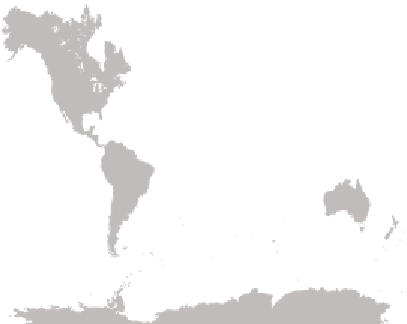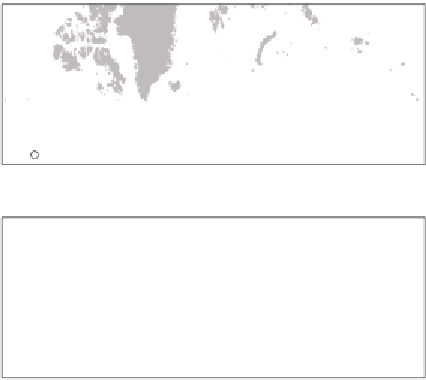Global Positioning System Reference
In-Depth Information
FIGURE 2.9.
Converging measurements of the earth's size. Following the French meri-
dian expeditions of the 1730s—which found the earth's radius to be 6,397 km and an
inverse flattening of 191—there were many other measurements of the earth's radius
and flatness. Note the agreement of recent measurements. (The flattening factor is
simply the fractional difference between polar and equatorial diameters; inverse
flattening is the reciprocal of this fraction.)
nineteenth century, surveyors were beginning to realize that a smooth,
simple ellipsoid (simple because only two parameters are required to de-
fine it) was not going to be good enough for very accurate geodetic work.
Bouguer, on the 1736 Peruvian expedition, noted that a plumb line was
pulled in the direction of nearby mountains (the Andes). Later, we will
see that another great survey found the same kind of deflection. Out in the
field, surveyors were beginning to see the e√ects of local concentrations
of mass.
Back home, mathematicians recognized from the early nineteenth cen-
tury that an ellipsoidal model of the earth was no longer tenable: contra-
dictions within the data they analyzed greatly exceeded the observational
accuracy of the surveyors' instruments. In 1828 Carl Friedrich Gauss first
described the geoid, which is, as we saw in chapter 1, the surface that is
perpendicular to all plumb lines. The deviations from the vertical that
surveyors were beginning to detect in the eighteenth and nineteenth cen-
turies demanded such an object: local anomalies simply could not be ac-














































